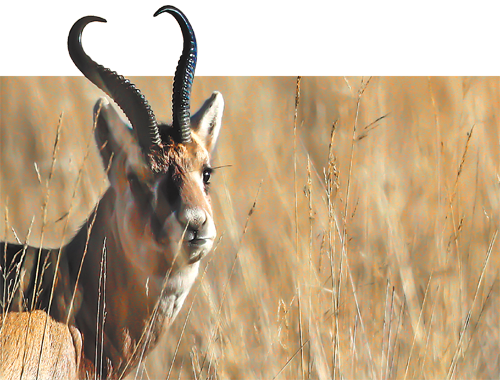Conservation lifts delicate ecosystem
Vulnerable species receive expansive protection, Li Yingxue reports in Hainan Tibetan autonomous prefecture, Qinghai.

Beginning in July, Qinghai Lake bursts to life with spectacular fashion — tens of thousands of scaleless carp (Gymnocypris przewalskii) known as luo li churn the river's surface as they muscle upstream, their sleek, silver bodies flashing like coins in the sun.
The air comes alive with splashes of water and the faint scent of lake water as these resilient fish leap against the current, transforming tranquil streams into glittering "silver rivers".
This species, classified as vulnerable on the China Species Red List, saw its population sharply decline in the 1960s and '70s due to overfishing and environmental degradation. But, thanks to years of relentless conservation efforts in Qinghai province, the population has rebounded to more than 120,000 tons.
Each summer, the breathtaking scene of the scaleless carp migration returns to Qinghai Lake. The fish's revival not only sustains the lake's delicate aquatic balance that also ripples outward, supporting the rich web of life that depends on its waters.
"The scaleless carp constitutes over 90 percent of the lake's total fish population and serves as the primary prey for birds like brown-headed gulls. This species plays a vital role in maintaining the ecosystem and biodiversity of the Qinghai Lake Basin," says Wang Shuning with the protection and utilization administration of the Qinghai Lake Scenic Area.
The fish are not alone in their resurgence. Across Qinghai's vast grasslands and rugged mountains, other iconic species — Tibetan antelope, snow leopards and Przewalski's gazelles — have also seen their numbers climb. Together, they signal the province's growing success in restoring a fragile high-altitude ecosystem once pushed to the brink.
Qinghai province has adopted a holistic approach to the protection and systematic governance of the interconnected ecosystem of "water, grass, fish, birds and animals" in the Qinghai Lake Basin.
"Qinghai's complex terrain and diverse landscapes of high mountains and glaciers have nurtured an abundance of species, making it one of the most concentrated areas for biodiversity, genetic diversity, and species diversity in high-altitude regions worldwide," says Hou Hongbo, director of the Qinghai Provincial Department of Ecology and Environment.
Today, Qinghai is home to 665 terrestrial wildlife species, 532 wild bird species, 52 fish species, and thousands of native plants and fungi — numbers that reflect decades of determined conservation.
"We remain committed to prioritizing ecological protection, continuously strengthening biodiversity conservation, and integrating the concept of a harmonious coexistence between humans and nature into everyday life."
To safeguard biodiversity, Qinghai enacted laws and regulations covering forests, grasslands, wetlands, wildlife and pest management in recent years. Measures include banning fishing in the Qinghai sections of the Yangtze and Yellow rivers, enforcing closed seasons and fishing moratoriums in Qinghai Lake, and implementing grassland protection initiatives such as grazing bans, rest-rotation grazing, and seasonal grazing systems.
"One example is our innovative 'Life Bird's Nest' project — we install artificial nests in safe locations on power transmission towers. This guides birds to nest and breed away from live electrical components, effectively solving the global challenge of balancing grid development with bird conservation," Hou says.
The population of Tibetan antelope has grown from fewer than 20,000 at the start of conservation efforts in 2000 to over 70,000 today. The number of snow leopards monitored in the province has also surpassed 1,200.
At the Qinghai Lake Biodiversity Conservation Research Center, lively Przewalski's gazelles gracefully bound across the windswept grasslands, their hooves barely making a sound on the soft earth. Visitors watch in quiet awe as the herd pauses intermittently, noses twitching in the crisp mountain air and ears flicking at distant calls.
Huang Zhuomojie, an ecological caretaker at the center, explains: "Przewalski's gazelles are part of a rescued population. Some were strays found around the area while others were injured. Initially, we rescued two but today, nearly 80 roam here freely.
"This area serves as an important corridor for gene flow between wild Przewalski's gazelle populations. Through scientific research and genetic lineage management, the ultimate goal is to combine captive breeding with successful releases back into the wild," Huang says.
The population of Przewalski's gazelles dropped to just over 300 in the 1990s. Thanks to two decades of tireless conservation efforts, the Qinghai Lake region is now home to more than 3,400 Przewalski's gazelles, including wild populations.
"One of their distinctive features is their white rump. It's not just for decoration. Normally, it's inconspicuous, but when danger approaches, they raise their tails and the white fur flares up like a signal. This alerts the herd to flee," Huang says.
"Their activity range is relatively fixed, as they are non-migratory with home ranges of around 200 square kilometers. Using drones and other technologies, the research center monitors their habits and breeding patterns to provide them with better protection."
Chen Dehui, deputy director of the Qinghai Lake Scenic Area Protection and Utilization Administration, notes that growing gazelle populations sometimes lead to competition with local herders over grasslands.
"Through outreach efforts, we explain to herders the ecological importance of this species and promote the concept of harmonious coexistence between humans and nature. Now, herders are much more conservation-minded," Chen says.
"During seasonal migrations, some herders voluntarily leave portions of their grasslands untouched so the gazelles can forage to survive the winter. We also provide supplementary feed in harsh winters, carefully doing so to avoid disrupting their natural behaviors."
Qinghai has further supported this shift by creating public welfare roles for ecological guardianship, allowing over 100,000 herders to protect the land while earning a living. Many have even become wildlife photographers, capturing the nature they help preserve.
From specially built viewing towers at the center, visitors and students can quietly observe the gazelles from a respectful distance to gain a deeper appreciation of their world.
"We consider Przewalski's gazelles a flagship species for conservation, just like the giant panda," Chen says.
"Their endearing appearance makes them an effective ambassador for raising public awareness. By protecting this species, we also safeguard its cohabiting flora and fauna, fostering a healthier, more resilient ecosystem. Each species plays a vital role in this delicate ecosystem."



Today's Top News
- Healthy economic ties serve both sides
- China releases details of Huangyan Island nature reserve
- Xi congratulates president of Guyana on reelection
- Get the timing right to reduce 'debt cost' of natural disasters
- Advancing cooperation in global service trade urged
- PPI declines ease in Aug, first since Feb






























